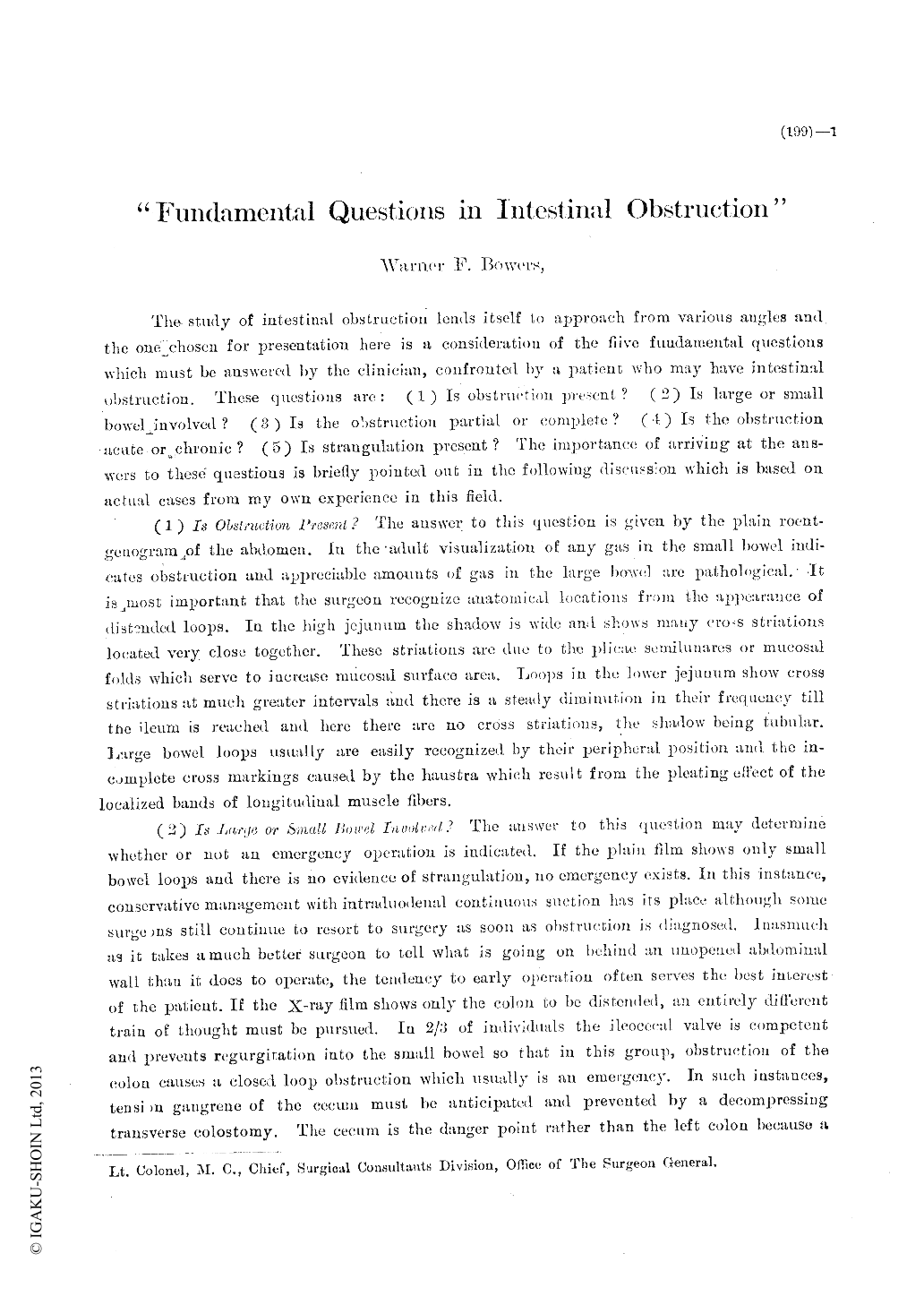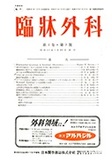- 有料閲覧
- 文献概要
- 1ページ目
The study of intestinal obstruction lends itself to approach from various angles and. the one chosen for presentation here is a consideration of the five fundamental questionswhich must be answered by the clinician, confronted by a patient who may have intestinalobstruction. These questions are: (1) Is obstruction present? (2) Is large or smallbowel involved? (3) Is the obstruction partial or complete? (4) Is the obstructionacute or chronic? (5) Is strangulation present? The importance of arriving at the ans-wers to these questions is briefly pointed out in the following discussion which is based onactual cases from my own experience in this field.
(1) Is Obstruction Present? The answer to this question is given by the plain roent-genograna, of the abdomen. In the adult visualization of any gas in the small bowel indi-cates obstruction and appreciable amounts of gas in the large bowel are pathological. ispiost important that the surgeon recognize anatomical locations from the appearance of dist2uded loops. In the high jejunum the shadow is wide and shows ninny cross striations located very close together. These striations are due to the plicae semilunares or mucosal folds which serve to increase mucosal surface area. Loops in the lower jejunum show cross striations at much greater intervals and there is a steady diminution in their frequency till the ileum is reached and here there are no cross striations, the shadow being tubular. Large bowel loops usually are easily recognized by their peripheral position and the in-complete cross markings caused. by the haustra which result from the pleating effect of the localized bands of longitudinal muscle fibers.

Copyright © 1949, Igaku-Shoin Ltd. All rights reserved.


